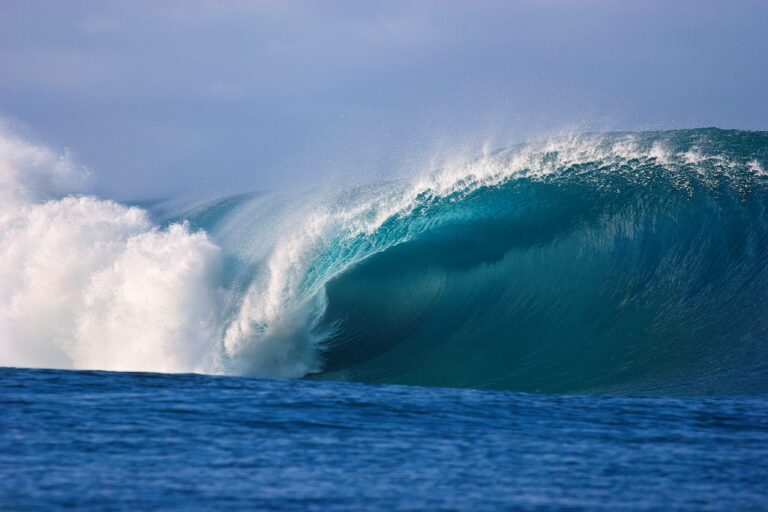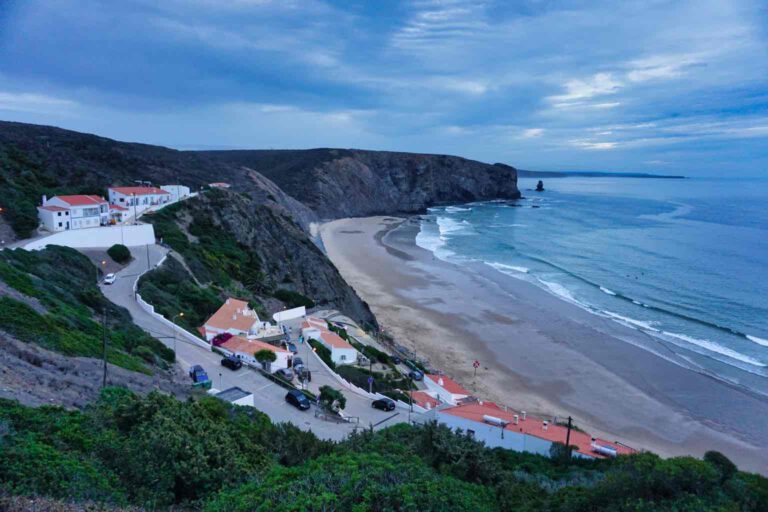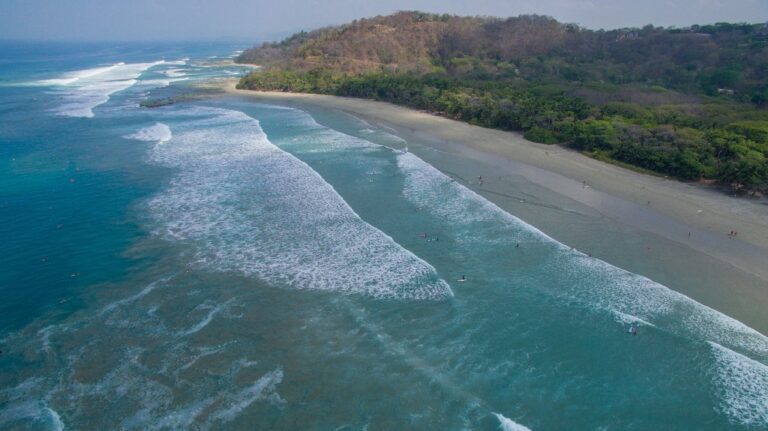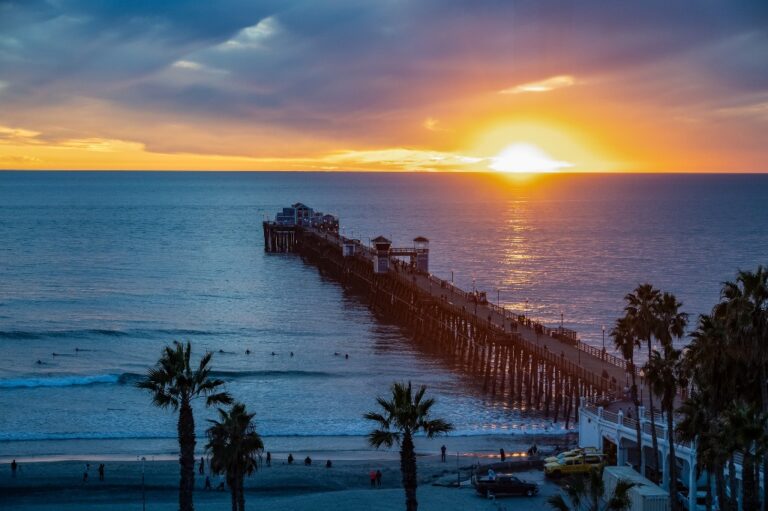El Tunco Surf Guide: Perfect Point Breaks and Pupusas
I just returned from an El Tunco surf trip, and let me tell you, it was INCREDIBLE. El Tunco is a little surf town in El Salvador, located right at El Salvador’s KM 43.
The town is small but busy, with tons of restaurants, surf shops, and beach bars. There are three waves located right in El Tunco: La Bocana, La Bocanita, and Sunzalito. However, the most famous and popular wave is a short walk north: El Sunzal, a peeling, right-hand point break.
I spent two weeks here surfing one to two times a day, chatting with locals about the different breaks in the area, and eating all the ceviche and pupusas I possibly could. It was epic!
If you’re thinking of taking a surf trip to El Tunco, you absolutely should, and here’s everything you need to know.
** This article contains affiliate links. As an Amazon Associate, I earn from qualifying purchases. Meaning, at no extra cost to you, I earn a small commission anytime you purchase any of the linked products. Thanks for your support of Gathering Waves!
How to get to El Tunco

The amazing thing about taking an El Tunco surf trip is that it’s really easy to get to. El Tunco is only a 45 minute drive from the El Salvador International Airport Saint Óscar Arnulfo Romero y Galdámez airport.
Book a shuttle
The easiest way to get from the airport to El Tunco is to book a shuttle. Depending on who you work with, it’ll cost you $30-$40 each way.
Call an Uber
You can also call an Uber from the airport. I didn’t do this personally, but someone in my hostel did and he paid $26 for the trip.
Rent a car
You can also rent a car to drive from the airport into El Tunco. I didn’t personally do this, but on my next surf trip to El Salvador I’m DEFINITELY renting a car. The road between the airport and El Tunco was super easy and straightforward, driving there would’ve been a breeze. Once you’re inside El Tunco, it’s a bit of a different story, the main streets of town are pretty windy and narrow, and I think you have to pay for most of the parking in town. I recommend booking a hotel that comes with parking, or at least reaching out to your hotel to ask for parking recommendations first.
With that said, having a car on an El Tunco surf trip would be the best way to do it since you then can explore all the surrounding breaks in nearby towns- and there are tons of them!
El Tunco surf overview
El Tunco is a super rocky beach with a famous rock right in the middle of it. The big rock is said to look like an upside down pig, which is why the town is called “El Tunco”- the Spanish name for a male pig.
There are surf spots on either side of the rock, some are good for beginners, some are super fast and best for advanced surfers, and some are in the middle.
What all the surf breaks in El Tunco have in common though, is that they’re extremely consistent. I was in El Tunco surfing for two weeks, and there was excellent surf every single day I was there. No matter the tide, or the time of the day or the wind, there was great surf! It was amazing.
I talked to one of the locals there, and he excitedly told me that El Tunco has the best waves in the world- they hold surf competitions here all year long, at any time of day, and confidently know when they schedule the competitions that there is going to be surf- even if it’s a year out. It’s pretty neat.
The different El Tunco surf breaks
Going from south to north, here are the different El Tunco surf breaks.
La Bocana

La Bocana is the most intense surf break in El Tunco- and maybe the best. It breaks right at the rivermouth in El Tunco, where the Rio Grande lets out. NOT the river in front of the El Tunco rock, this one is a bit further south.
La Bocana is a rivermouth A-frame wave, and it’s most famous for its left, which gets a nice wall and holds up pretty well. You can also take the right at La Bocana, but it’s much steeper and one of the local surf instructors told me the right side is full of erizos, which is Spanish for sea urchins.
La Bocana breaks super fast and heavy, and it’s mostly a shortboarding break for more advanced surfers.
There are a ton of rocks here, so be careful paddling out and coming in. The break works best at a mid tide- high tide can be a bit too much water.

La Bocanita

If you’re standing on the beach directly facing the big rock, La Bocanita is the surf break a little to the left of the rock. It works at high tide, and it’s a super steep and fast right. There’s a lot of current here, and the wave doesn’t hold up as well as other surf breaks in El Tunco, but it’s a fun, fast little wave. Just watch out for rocks and crazy currents.
Sunzalito

Sunzalito is located on the other side of the rock, right in the heart of town. It’s a sandy-bottom beach break, and most popular for beginner surfers.
If you’re just learning to surf and sign up for a surf lesson in El Tunco, chances are your instructor will take you to Sunzalito to learn the basics of surfing in the whitewater.
Sunzalito isn’t just for beginners though- with the right swell, and a lower tide, there are fun, fast little waves here for all. I remember seeing skilled longboarders all the way on the nose of their boards at Sunzalito, and shorboarders catching fast little lefts, and even getting covered up a bit.

El Sunzal
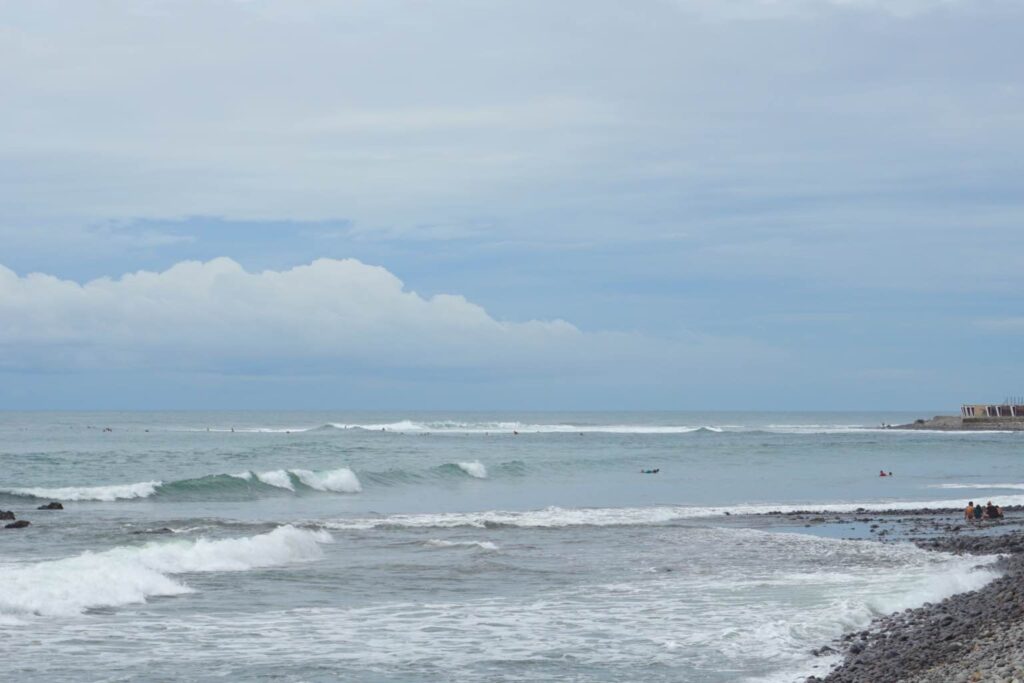
Last but not least- El Sunzal. El Sunzal is located about a 15-20 minute walk on the beach from El Tunco. This wave is a right hand point break that breaks over a rocky bottom. El Sunzal works on all tides, but is best during a mid tide dropping.
Walking to the break
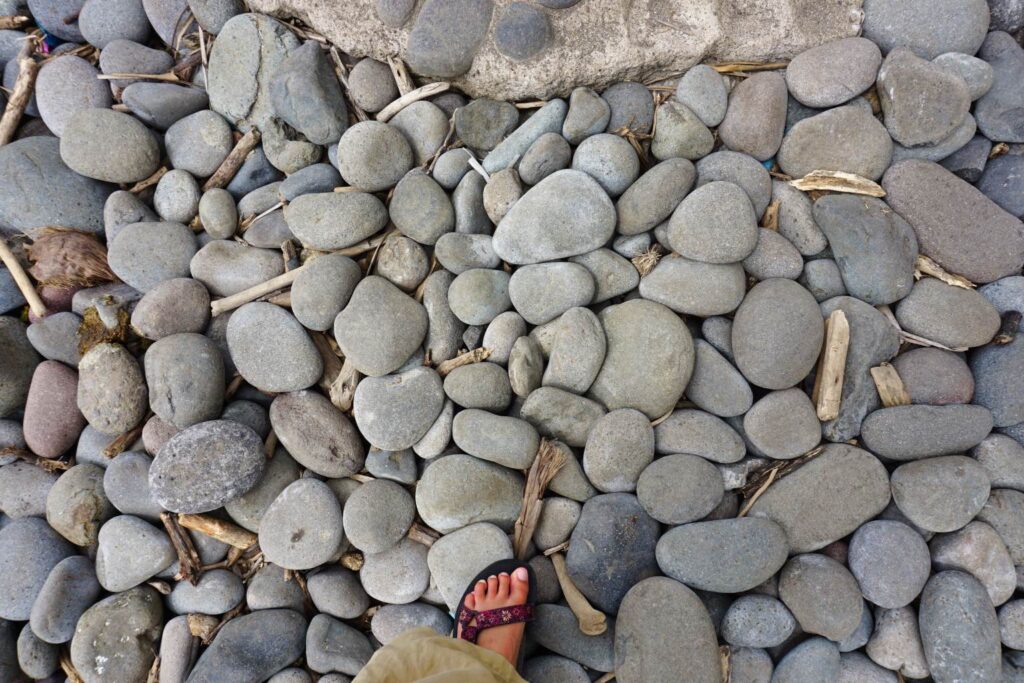
If you’re coming from El Tunco, the walk to El Sunzal can be a bit intense. With the exception of February and March, almost the entire beach is covered in little rocks you have to walk over. They’re not too bad in the early morning or on a cloudy day, but in the middle of the day the rocks get EXTREMELY hot to walk on. At high tide, the walk is a little more difficult than low tide because you have to billy goat across the beach on the rocks at the top of the slope.
Most people go barefoot, since there’s no place to safely stash shoes. I usually made the walk barefoot, but on my last day I did bring a pair of slides and stashed them on top of one of the two big rocks on the beach. Some other people had done the same thing.
Where to paddle out
Once you get to the end of the beach, there are two big rocks with sand between them. This is where you should paddle out, and let the current pull you around the outside, and paddle to the surf.
Don’t paddle right through the lineup, it’s best to go all the way around and then make your way into the lineup. It’s a pretty long paddle.
Even more importantly, when you’re coming out of the water, you want to paddle out between those two big rocks. Especially at high tide, the current will try to pull you south. Instead, ride a wave in from the inside and be sure to paddle in between those two big rocks. If you paddle in further south, especially at high tide, there are more rocks getting out, and it can be a little sketchy.
About the wave
El Sunzal is a right hand point break. It’s a pretty soft wave, and it’s great for intermediate surfers. For the takeoff, you have to be RIGHT at the peak, at the steepest part of the wave to get into it. The drop can be a bit quick but once you’re in it, it’s very soft. One of the local surf coaches there, Bamba, told me that El Sunzal is the softest wave in El Salvador.
However, it’s a really nice wave and you can get up to 300m rides!
There are multiple takeoff spots, including the furthest outside section, and a few inside sections. If you catch one on the very outside, you’ll likely have to surf righ through the lineup. If you’re surfing on the iside sections, you’ll have to watch out for the set waves and surfers on the outside- it’s a bit of a dance, and the lineup is always moving.
Crowds at El Sunzal
El Sunzal is INSANELY crowded. It’s an amazing wave, but it’s really, really crowded. To the point where it’s pretty dangerous, with beginner/intermediate surfers frequently bailing their longboards and having them hit or almost hit other surfers.
Because the morning time is particularly crowded, I usually tried to surf midday instead, and it was a lot better, but still more crowded than most of the other breaks I’ve surfed in the world.
Don’t get me wrong, I still had an amazing time and scored tons of waves. But don’t go and expect to be the only person in the lineup!
Best time to surf in El Tunco
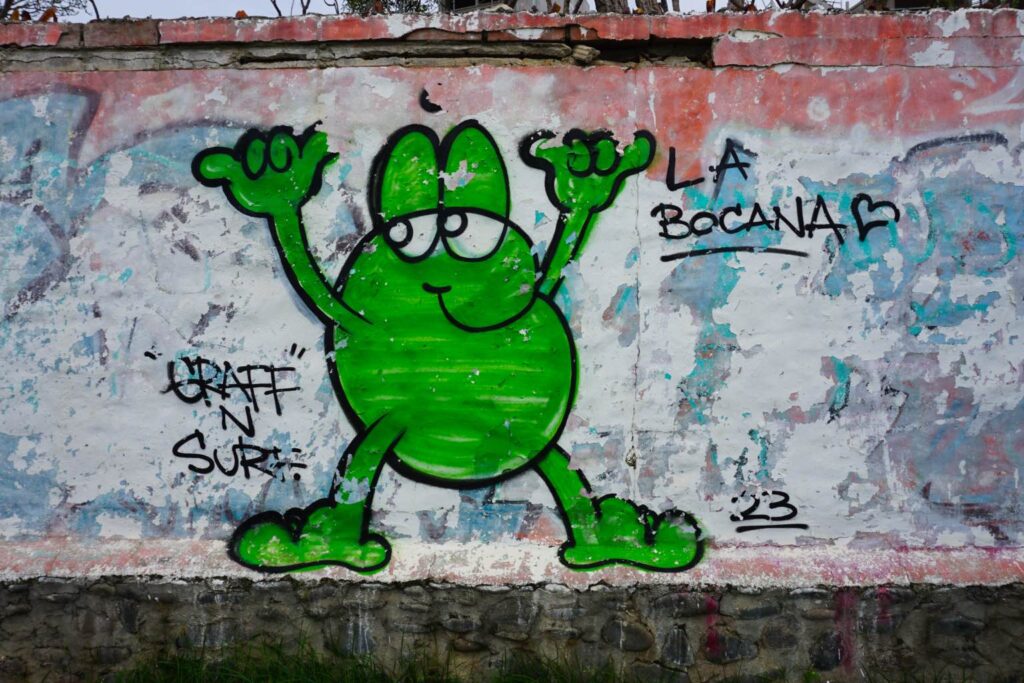
There’s never a bad time to surf in El Tunco, this area gets awesome waves all year long. However, it’s pretty drastically different depending on what time of year you go, so you’ll want to plan accordingly.
Rainy season: Late April- October
During the rainy season, the waves in El Tunco are at their biggest. This is great for more experienced surfers looking to surf a bit more size and consistency.
During the rainy season, El Tunco hosts a lot of surf competitions. Early in the season there are a few junior surf competitions, and in June, there is a WSL event here, and it can get very busy in the water with pro surfers.
Dry season: November- April
During the dry season, the swells calm down a bit and you get smaller, mellower waves and less of a crowd factor with the professional surfers. However, during these months more beginner/ intermediate surfers flood in, and the lineups get busy in a different way.
I was there the first two weeks in November, and it was pretty wonderful. I’d definitely call it one of the best places in the world to surf in November.
El Tunco surf FAQs
Is El Tunco safe?
I personally found El Tunco to be very safe. During my time there, I was never once worried for my safety, or worried about any of my belongings being stolen.
It’s also worth noting that I traveled to El Tunco for the first week by myself, and felt very safe, even as a solo female traveler! If you’re curious about getting into solo travel, here is an excellent guide with beginner tips for solo travel.
Is El Tunco expensive?
Compared to other places in El Salvador, and compared to the wage locals are paid in El Salvador, yes it is very expensive. Coming from California, we had a lot of purchasing power but were still mindful of the prices.
Typically, a beer was $1.50, ceviche was $7-$9, pupusas were $1, surfboard rentals were $15/day, a bed in a dorm was about $20/night, and a bed in a private room started at $50/night.
Also, they use the USD in El Tunco as currency.
If you’re coming from the US, Europe, or AUS, your money will go pretty far here, making it one of the cheaper places for a surf trip. Especially if you stay in a neighboring surf town that’s a little cheaper than El Tunco.
Check out my guide to the best restaurants in El Tunco I ate at during my trip!
Is it safe to surf El Tunco?
If you’ve booked a surf lesson with an experienced instructor, or if you’re an experienced surfer yourself, yes it is safe to surf El Tunco.
Can you swim at El Tunco Beach?
There is a ton of current at El Tunco Beach, so I wouldn’t really advise swimming. The best place for swimming would be at low tide over at Sunzalito. It’s a sandy bottom so you don’t have to worry as much about the rocks, but I wouldn’t recommend going far from shore, and I definitely wouldn’t recommend it if there is a lot of swell or current in the water.
Does Uber work in El Tunco?
Allegedly. We called an Uber to try to get to the Tamanique waterfall, waited, waited, and waited, and never got a ride. I think it might be easier to Uber from the airport to El Tunco, but it’s a little difficult to get a ride with Uber once you’re already in El Tunco.
El Tunco Surf Guide- Final Thoughts
That’s a wrap on my El Tunco surf guide! I hope this guide has helped you plan your next surf trip, and answered any questions you might have about surfing in El Tunco.
If you’re nervous about heading to El Salvador for a surf trip- don’t be! I had an amazing time, the locals were so warm and friendly, and I felt safe the whole time I was there.
Plus, the surf is 85 degrees and pretty dang good.
If you’d like a little more guidance planning your next surf trip, head on over to my surf trip planning services page– I would love to help you out.
Happy surfing!

